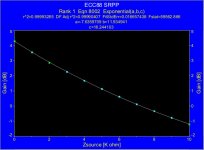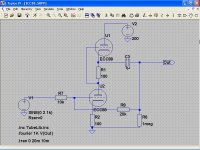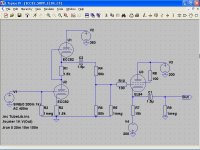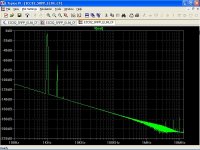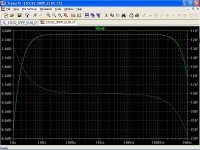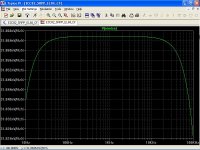I am working to prove that the analogy for dielectrics is valid, at least for some particular cases.
A roughly proof
Constitutive relations can be written in a general form as
Di = εij(ω) Ej
Bi = μij(ω) Hj
Bi = μij(ω) Hj
Where
εij(ω) is the rank 2 permittivity tensor
μij(ω) is the rank 2 permeability tensor
From Thermodynamics, it can be proved that in most cases both tensors must be symmetric, i.e. εij = εji and μij = μji
It is always possible to choose coordinate systems in that both tensors are diagonal, i.e. εij = 0, i ≠ j and μij = 0, i ≠ j.
Let’s suppose an Isotropic medium, both, εij(ω) and μij(ω), must be diagonal tensors with all its elements equal and real, then we can write
D = ε(ω) E
B = μ(ω) H
B = μ(ω) H
Conclusion: For an isotropic medium we don't need a tensor.
1) The response of the medium is Linear
Then, ε(ω), and μ(ω), must be real linear functions.
Curves D=f(E) and B=f(H) must be open curves, so no hysteresis.
In the particular case of an Homogeneous medium
D = ε E
B = μ H
B = μ H
With ε, and μ, constants.
Curves D=f(E) and B=f(H) must be straight lines, so no hysteresis.
2) The response of the medium is Nonlinear
Then ε(ω), and μ(ω), must be real nonlinear functions, and without loss of generality, due to E and H are also function of ω, we can put
ε = ε (E)
μ = μ (H)
Again, curves D=f(E) and B=f(H) must be open curves, so no hysteresis.
Conclusion: For an isotropic medium we don't have hysteresis.
Conversely, let's suppose now that we have hysteresis, i.e. D=f(E) is a closed curve, to write constitutive relation without using tensors
D = ε(ω) E
We need a different model for ε(ω), as far as I know, the cool and easiest way
ε(ω) = ε’(ω) + i ε’’(ω)
Then, dissipation factor, can be written as
tan (δ) = ε"(ω) / ε'(ω)
Then, we can write
ε(ω) =∣ε(ω)∣ [ cos (δ) + i sin (δ) ]
On condition of taking the real part, we also can write
E = Eo exp (- i ω t) = Eo [ cos (ω t) - i sin (ω t) ]
Then
D = Re [ε(ω) E ] = ∣ε(ω)∣ Eo cos (ω t - δ)
E = Eo cos (ω t)
On the plane E D, those are parametric equations of a differentiable closed curve, in this case an ellipse, so was proved hysteresis.
Obviously, the response of the medium is nonlinear.
For a perfect lossless dielectric, i.e. without hysteresis, we need
tan (δ) = 0
Then must be
ε"(ω) = 0
Permittivity must be real.
ε(ω) = ε’(ω)
We are again on the previous situation for an isotropic medium, so was proved that with a complex model for permittivity we must have anisotropy.
Conclusion: Both, Anisotropy and Nonlinearity are necessary conditions for Hysteresis.
Q.E.D.
Last edited:
even if he's right, there are no awards to be granted, not even a lollipop....
It doesn't matter, a cheap resistor would be fine.
This is an inverting amplifier. I don't think you applied the feedback correctly. Notice all the "grass" in the FFT. This is open loop @ 1.16Vrms output @ 1kHz. Since this is driving 1M ohm, THD is very low. I changed the load to 100k and the open loop THD goes up a lot, as expected, and loop feedback brings it down (when the input level is adjusted to match the open loop output level). The "grass" remains unchanged. So, without loop feedback, and putting the volume control after the gain stage, means that you're basically listening to distortion and noise. If that floats your boat, then so be it, but it's not what audio engineers usually strive for in their designs. There's a very good reason that the volume control goes in the front of the preamp, and that's why it's been done that way for decades now.
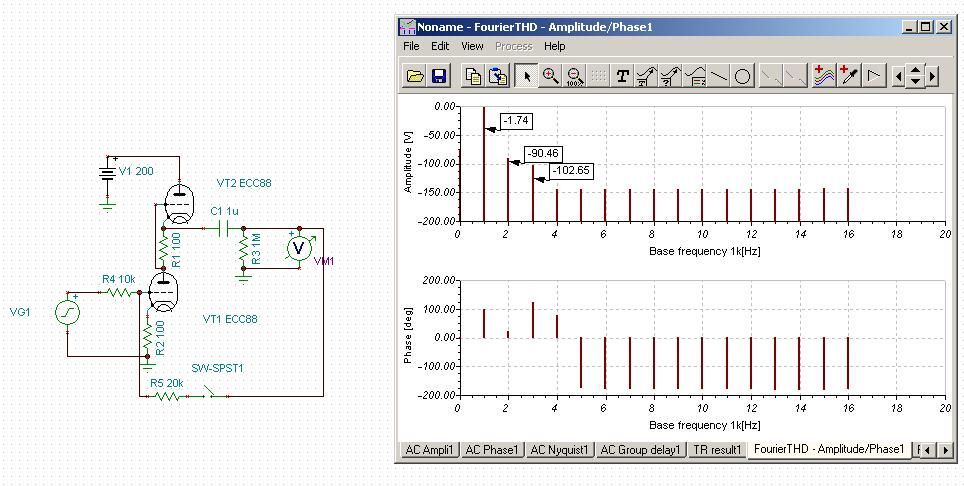
Just two little details
1) Open loop you need a grid leak resistor.
2) Closed loop, output level is highly dependent on the impedance of the source, not a problem with a CDP/DAC, though.
A well implemented volume pot should help.
Last edited:
Just two little details
1) Open loop you need a grid leak resistor.
2) Closed loop, output level is highly dependent on the impedance of the source, not a problem with a CDP/DAC, though.
A well implemented volume pot should help.
1) NO. The source impedance is zero.
2) it is not "highly" dependent, though it does influence the output level.
Your volume pot location after the gain stage results in distortion at the output of some 5 times as compared to putting the volume pot at the front. So, yeah, like I said. you are listening to distortion, not music. So, no, I don't think you know how to "implement" a volume pot.
Well, I can't hear any noise or distortion. Your attempt is appreciated but it's not coherent with reality. Please build it and then give your opinion.
Whether or not you can "hear" it is completely irrelevant to the fact that your choice of volume pot location results in about 5 TIMES the distortion (for the same output level) of a properly implemented volume control at the front of the preamp. So, why in the hell should I build something that I already know is fatally flawed? I don't build fatally flawed crap, thank you.
Whether or not you can "hear" it is completely irrelevant to the fact that your choice of volume pot location results in about 5 TIMES the distortion (for the same output level) of a properly implemented volume control at the front of the preamp. So, why in the hell should I build something that I already know is fatally flawed? I don't build fatally flawed crap, thank you.
In general it is possible to build a preamp with the volume pot at the output with very low distortion. It's not easy but it is possible. This is one and it is also DC coupled....!! :
http://www.audiodesignguide.com/ba/VTPA3.jpg
Aloia certainly doesn't make electronics with high distortion. Actually it is rather the contrary in comparison to the general trend as he make amplifiers with both valve and solid state technologies and this is also reflected in the fact that his valve amps have low distortion or at least the specified performance is always accompanied by distortion figures which are lower than typical.
1) NO. The source impedance is zero.
I don't want to be unkind with you, but this is not a good design criteria, a good design must allow to connect a "black box" source regardless its output impedance. IMHO
2) it is not "highly" dependent, though it does influence the output level.
Yes, it is, note that above about 7K, actually it is an attenuator.
Your volume pot location after the gain stage results in distortion at the output of some 5 times as compared to putting the volume pot at the front. So, yeah, like I said. you are listening to distortion, not music.
Seems to me that you confuse this thread with another
http://www.diyaudio.com/forums/tubes-valves/228331-volume-pot-hidden-villain-preamp.html
However, the difference is that with the pot at the input, distortion depends on the volume pot position, indeed at maximum volume both configurations have the same distortion, so 5 times more distortion is a fanciful argument.
So, no, I don't think you know how to "implement" a volume pot.
Can you please illuminate me with a properly "implemented" volume pot ?
In your circuit, by the way.
Thanks.
Attachments
Last edited:
It seems a little bizarre to me placing a volume pot on the output without following it with a buffer stage. Its either going to present a low impedance load, or severely compromise the output impedance of the preamp - or possibly both.
If we really want a black box performance, with the capability of driving any bizarre power amp, a simple cathode follow buffer after the pot would surely be a better option.
Shoog
If we really want a black box performance, with the capability of driving any bizarre power amp, a simple cathode follow buffer after the pot would surely be a better option.
Shoog
Last edited:
It seems a little bizarre to me placing a volume pot on the output without following it with a buffer stage. Its either going to present a low impedance load, or severely compromise the output impedance of the preamp - or possibly both.
Yes and no, on that order.
Although not my proposal, this solution was implemented by Arthur Loesch. IIRC
If we really want a black box performance, with the capability of driving any bizarre power amp, a simple cathode follow buffer after the pot would surely be a better option.
Shoog
Agree, by definition, a line preamplifier must be able to handle line level signal, i.e. about 0.3 VRMS, so for 1 VRMS output you need at least 10 dB gain.
If you already have 1 VRMS signal, or more, doesn't make sense a gain stage after all.
It seems a little bizarre to me placing a volume pot on the output without following it with a buffer stage. Its either going to present a low impedance load, or severely compromise the output impedance of the preamp - or possibly both.
If we really want a black box performance, with the capability of driving any bizarre power amp, a simple cathode follow buffer after the pot would surely be a better option.
Shoog
I completely agree. The only place where I have seen a volume control pot on the output is in microphone preamps, where they call it "trim" I believe.
Another option, though still not ideal, is to use a pot in the feedback loop to have variable gain.
I don't want to be unkind with you, but this is not a good design criteria, a good design must allow to connect a "black box" source regardless its output impedance. IMHO
It's only a demo circuit. Please don't confuse it with real life.
In general it is possible to build a preamp with the volume pot at the output with very low distortion. It's not easy but it is possible. This is one and it is also DC coupled....!! :
http://www.audiodesignguide.com/ba/VTPA3.jpg
Aloia certainly doesn't make electronics with high distortion. Actually it is rather the contrary in comparison to the general trend as he make amplifiers with both valve and solid state technologies and this is also reflected in the fact that his valve amps have low distortion or at least the specified performance is always accompanied by distortion figures which are lower than typical.
That is certainly a complicated way to do a simple thing. I didn't say it could not be done. I did say that it was not ideal. He may have even lower distortion if he controlled the gain some other way. When I said "5 times worse", it does not necessarily mean that it was gross and unlistenable. In the example I was using, the difference was 0.002% vs. 0.01% or thereabouts.
I would call this a non-understanding of electrical properties of polymers and ferroelectricity.
Indeed, my understanding about Chemistry tends to zero, especially at the moment to open my mouth.
However, for ferroelectricity I have an alibi, when post after post after post, I'm not heard, I can be a bit angry and more prone than normal to screw up.
Any amorphous polymer containing polar groups will be isotropic (by definition) yet show hysteresis to a greater or lesser degree.
As was proved here
http://www.diyaudio.com/forums/tubes-valves/207544-ecc82-12au7-line-preamp-31.html#post3931197
Without any value judgment on your understanding of physics, I would say only that your assertions can't be both true simultaneously, and that’s the point from the beginning, to have hysteresis it's needed anisotropy, then an isotropic material, if it exists any, can't show hysteresis.
Properties given "by definition" works perfectly in mathematics, but in physics they are a bit tricky.
As I said before, most capacitor polymers are semicrystalline.
Crystallization of polymers - Wikipedia, the free encyclopedia
http://www.google.com.ar/url?sa=t&r...rlkcZdz5muO7h-A&bvm=bv.66699033,d.cGU&cad=rja
http://www.google.com.ar/url?sa=t&r...vUFVeKdRvTu8HxQzN1E9yEw&bvm=bv.66699033,d.cWc
However, the difference is that with the pot at the input, distortion depends on the volume pot position, indeed at maximum volume both configurations have the same distortion, so 5 times more distortion is a fanciful argument.
I suppose that you did not comprehend what I had written. I said 5 times worse for the same output level. Virtually no one I know of listens to a preamp at full volume setting, so that is practically irrelevant. Obviously, the THD would be the same if the volume pot was at 100% for before or after the preamp. I just becomes a resistor to ground in that case.
That is certainly a complicated way to do a simple thing.
I would like to see a simple SRPP with 0.002% THD at 1 V RMS output for REAL. Without feedback, of course. I have never seen one.
Complicated is subjective but anyway it surely works great, and not just because I say it. It's a commercial product that you can buy as a kit if you don't want to go mad to understand all the tricks in play. It also has choke input PSU.
It's only a demo circuit. Please don't confuse it with real life.
Ah, silly me, it is just a simulation, nice excuse by the way.
Sorry, but when I make a simulation, it is supposed to work in real life, and quite often they do it.
In general it is possible to build a preamp with the volume pot at the output with very low distortion. It's not easy but it is possible. This is one and it is also DC coupled....!! :
http://www.audiodesignguide.com/ba/VTPA3.jpg
Aloia certainly doesn't make electronics with high distortion. Actually it is rather the contrary in comparison to the general trend as he make amplifiers with both valve and solid state technologies and this is also reflected in the fact that his valve amps have low distortion or at least the specified performance is always accompanied by distortion figures which are lower than typical.
Totally agree !
About Italian audio designers, I would say that they honor Italian classical composers, I don't know any bad.
I would like to see a simple SRPP with 0.002% THD at 1 V RMS output for REAL. Without feedback, of course. I have never seen one.
Maybe it is another prejudice, but judging an amp/preamp only by its distortion is like judging a woman only by her legs.
I myself have heard 0.1 % THD preamps, measured by a friend of mine, and I couldn't find any difference with others showing one order of magnitude lower distortion.
I suppose that you did not comprehend what I had written. I said 5 times worse for the same output level.
No, you didn't, let me explain, supposing identical gain stages, you have two cases
1) With the volume pot at output
For a given input voltage, distortion depends on valve and its topology and it is almost constant regardless of volume pot position/output voltage.
2) With the volume pot at intput
For a given input voltage, distortion depends on valve, its topology and volume pot position.
Then, for the same output voltage, exists a volume pot position where distortion of 1) is n times distortion of 2), but it is not necessary nor universal that n=5, then 5 times more distortion remains a fanciful argument, and 5 a random number.
Virtually no one I know of listens to a preamp at full volume setting, so that is practically irrelevant.
It is said over there that a standard mastering level for a digital recording is at about 16dB average below the maximum level possible, so a standard CDP/DAC has an output of about 0.32 VRMS for a 2 VRMS standard.
Your proposed circuit, on the best case scenario, i.e. zero source impedance, has a gain of about 4.32 dB, so at maximum volume expect an output voltage of about 0.52 VRMS.
Then, under this supposition, it is not as irrelevant.
A reasonable equilibrium between THD, noise, frequency response, phase shift and gain.
I have no idea about EL84 noise, so no calculation, sorry.
BTW, the volume pot is between both sections, sadly LTSpice doesn't allow pots, so two resistors is a good equivalent.
I have no idea about EL84 noise, so no calculation, sorry.
BTW, the volume pot is between both sections, sadly LTSpice doesn't allow pots, so two resistors is a good equivalent.
Attachments
Last edited:
Without any value judgment on your understanding of physics, I would say only that your assertions can't be both true simultaneously, and that’s the point from the beginning, to have hysteresis it's needed anisotropy, then an isotropic material, if it exists any, can't show hysteresis.
Properties given "by definition" works perfectly in mathematics, but in physics they are a bit tricky.
As I said before, most capacitor polymers are semicrystalline.
Indeed, I agree that you would say that. Nonetheless, it's incorrect. Take a block of semicrystalline polymer. Measure the properties from face to face in all three directions. Get back to me once you've done that.
Your confusion, I think, is separating what happens on a microscopic, single domain level with what happens at a macroscopic level. You're also, I believe, not thinking through the consequences of the symmetry aspect- we only apply a field in the z direction.
- Status
- This old topic is closed. If you want to reopen this topic, contact a moderator using the "Report Post" button.
- Home
- Member Areas
- The Lounge
- ECC82/12AU7 Line Preamp
